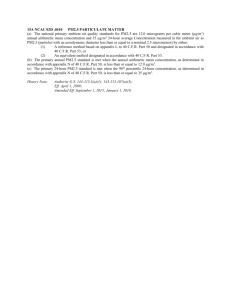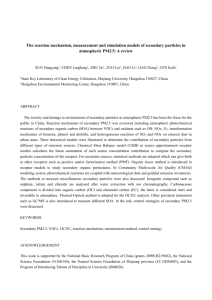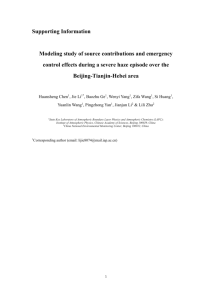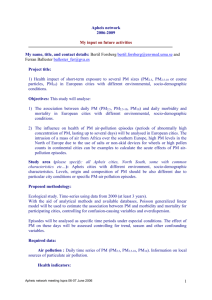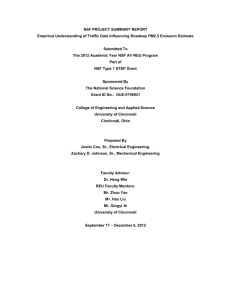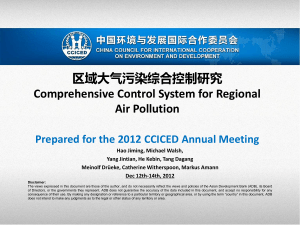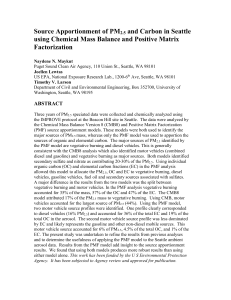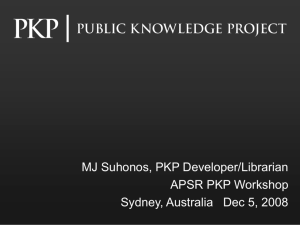Development of a Multi-Region air quality benefit evaluation tool for
advertisement
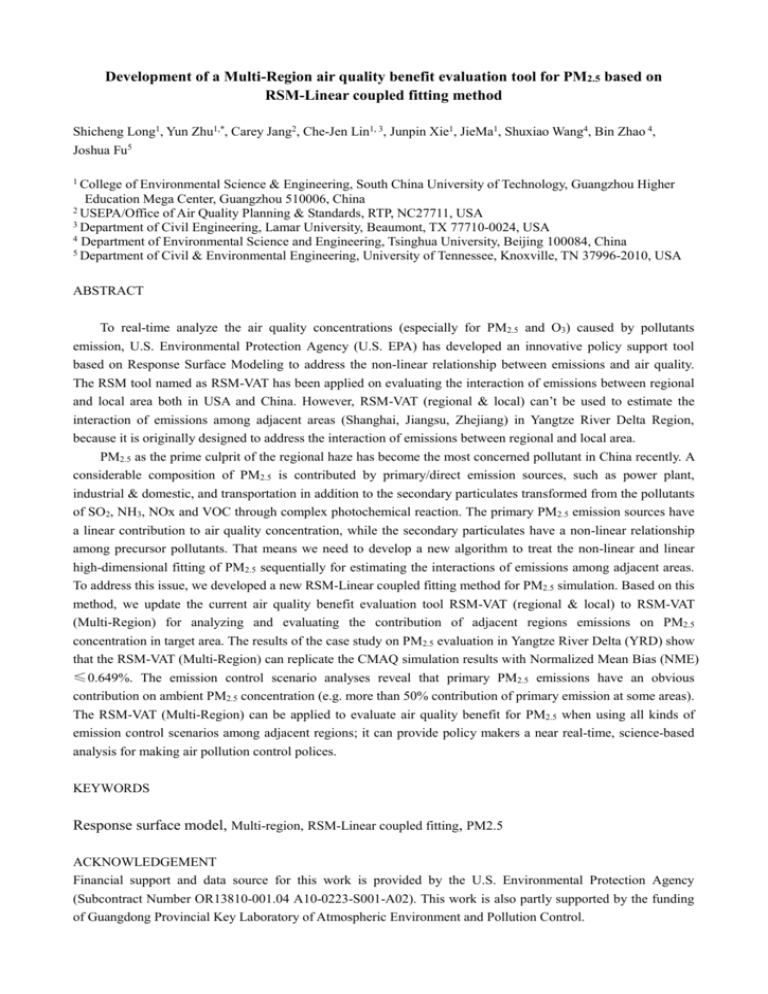
Development of a Multi-Region air quality benefit evaluation tool for PM2.5 based on RSM-Linear coupled fitting method Shicheng Long1, Yun Zhu1,*, Carey Jang2, Che-Jen Lin1, 3, Junpin Xie1, JieMa1, Shuxiao Wang4, Bin Zhao 4, Joshua Fu5 1 College of Environmental Science & Engineering, South China University of Technology, Guangzhou Higher Education Mega Center, Guangzhou 510006, China 2 USEPA/Office of Air Quality Planning & Standards, RTP, NC27711, USA 3 Department of Civil Engineering, Lamar University, Beaumont, TX 77710-0024, USA 4 Department of Environmental Science and Engineering, Tsinghua University, Beijing 100084, China 5 Department of Civil & Environmental Engineering, University of Tennessee, Knoxville, TN 37996-2010, USA ABSTRACT To real-time analyze the air quality concentrations (especially for PM2.5 and O3) caused by pollutants emission, U.S. Environmental Protection Agency (U.S. EPA) has developed an innovative policy support tool based on Response Surface Modeling to address the non-linear relationship between emissions and air quality. The RSM tool named as RSM-VAT has been applied on evaluating the interaction of emissions between regional and local area both in USA and China. However, RSM-VAT (regional & local) can’t be used to estimate the interaction of emissions among adjacent areas (Shanghai, Jiangsu, Zhejiang) in Yangtze River Delta Region, because it is originally designed to address the interaction of emissions between regional and local area. PM2.5 as the prime culprit of the regional haze has become the most concerned pollutant in China recently. A considerable composition of PM2.5 is contributed by primary/direct emission sources, such as power plant, industrial & domestic, and transportation in addition to the secondary particulates transformed from the pollutants of SO2, NH3, NOx and VOC through complex photochemical reaction. The primary PM2.5 emission sources have a linear contribution to air quality concentration, while the secondary particulates have a non-linear relationship among precursor pollutants. That means we need to develop a new algorithm to treat the non-linear and linear high-dimensional fitting of PM2.5 sequentially for estimating the interactions of emissions among adjacent areas. To address this issue, we developed a new RSM-Linear coupled fitting method for PM2.5 simulation. Based on this method, we update the current air quality benefit evaluation tool RSM-VAT (regional & local) to RSM-VAT (Multi-Region) for analyzing and evaluating the contribution of adjacent regions emissions on PM2.5 concentration in target area. The results of the case study on PM2.5 evaluation in Yangtze River Delta (YRD) show that the RSM-VAT (Multi-Region) can replicate the CMAQ simulation results with Normalized Mean Bias (NME) ≤0.649%. The emission control scenario analyses reveal that primary PM2.5 emissions have an obvious contribution on ambient PM2.5 concentration (e.g. more than 50% contribution of primary emission at some areas). The RSM-VAT (Multi-Region) can be applied to evaluate air quality benefit for PM2.5 when using all kinds of emission control scenarios among adjacent regions; it can provide policy makers a near real-time, science-based analysis for making air pollution control polices. KEYWORDS Response surface model, Multi-region, RSM-Linear coupled fitting, PM2.5 ACKNOWLEDGEMENT Financial support and data source for this work is provided by the U.S. Environmental Protection Agency (Subcontract Number OR13810-001.04 A10-0223-S001-A02). This work is also partly supported by the funding of Guangdong Provincial Key Laboratory of Atmospheric Environment and Pollution Control.
